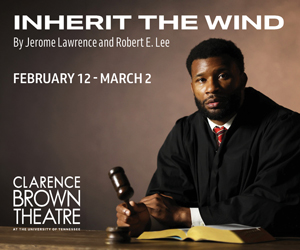All four of the works on Sunday afternoon’s Chamber Classics Series concert by the Knoxville Symphony Orchestra came from the tonal side of the 20th Century, but each of the works seem to possess an ineffable quality of timelessness that allows it to exist outside of time and place. I was reminded of this timelessness when I realized it was only 34 years ago in New York City that a special performance of Prokofiev’s Peter and the Wolf took place with the Brooklyn Philharmonic at Alice Tully Hall in commemoration of the then upcoming 50th anniversary of the work. On that occasion, the composer’s 88-year old widow, Lina, narrated the work.
Jump ahead those 34 years to 2019—to the Bijou Theatre and the KSO Chamber Orchestra—and the seductive charm of Peter and the Wolf on the afternoon concert was most assuredly still intact. Maestro Aram Demirjian was joined by Knoxville actress Tracey Copeland Halter as narrator in what was a feast of imaginative storytelling and music—and music education. Of course, the work is also a feast for the musicians’ enticing solo moments in which instruments portray the character of animals and people in the story: the bird (Hannah Hammel, flute), the duck (Claire Chenette, oboe), the cat (Gary Spurl, clarinet), the Wolf (three horns – Jeffery Whaley, Sean Donovan, and Brooke Ten Napel), Grandfather (Aaron Apaza, bassoon), the hunters (Michael Combs, timpani), and Peter (the strings).
Time also has a way of changing perceptions. In 1913, Stravinsky shocked his audience to the point of riot with The Rite of Spring and its challenging ideas of tonality and rhythm. Less than a decade later, the composer shocked the audience again, but this time with a different outcome. His score for Diaghilev’s ballet Pulcinella took the composer in the direction of Neo-classicism which would be his destination for several decades. After the success of the ballet in 1920, Stravinsky created the Suite from Pulcinella, the work with which Demirjian concluded the afternoon, again, a feast for both individual musicians and the ensemble—and subsequently for the large Sunday afternoon audience.
Each half of the concert opened with works a bit more contemplative, certainly more softly impressionistic in their storytelling ability—Ravel’s Mother Goose Suite and Sibelius’ Valse Triste.






